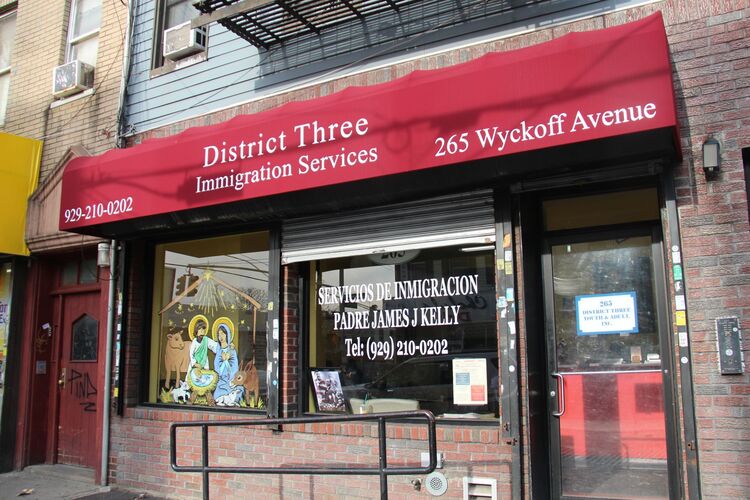The Irish Hunger Memorial in Downtown Manhattan.
BPCPARKS.ORG
By Áine Ní Shionnaigh
It is a damp spring morning in 1952 in the townland of Carrowdoogan, Attymass, County Mayo. An altar boy proudly assists Canon O’Callaghan at the Station Mass in the Slack family cottage at the foot of the Ox Mountains. The Station Mass is when a family open their home to the community so that Mass may be offered for the townland. It will take much more than Masses, or even a miracle, to undo the damage and desolation deeply engraved on this townland. Attymass was torn apart over one hundred years previously by death, starvation and emigration. The first deaths from hunger in Ireland were officially recorded in the Parish of Attymass. The Great Hunger succeeded in destroying the future here for most of its inhabitants. On this day however, the altar boy, imbued with the optimism and innocence of youth, is grateful to escape a morning at school, and looks forward to the rare, albeit simple luxury of sugared tea, a chunk of currant bread and perhaps a few coppers if the Canon is feeling extra generous.
Ten years later, all has changed. The last fire in the hearth of the Slack family's homestead has been extinguished forever. The cottage is being used to shelter cattle. Without a fire, it will shortly succumb to the same fate as the other rural cottages in the townland and indeed, all over Ireland. The cottage will be unrecognizable as a dwelling, the stones will be scattered to the four winds in the surrounding fields, as they were before the cottage was built in 1827, hence the description, fieldstone cottage. It is as if a generation never existed. The altar boy is now twenty years old and is exiled in New York City, far from his family and friends in Attymass. He has been forced to take the well-trodden path of emigration from the West of Ireland to America in order to survive.
In the summer of 2002, fifty years after the Station Mass, the altar boy proudly stands again in Slack's fieldstone cottage. It is roofless now. The sky has changed; no longer the rapidly changing sky of North Connacht, it is a clear sky of the brightest blue. There are no shadows cast by the Ox Mountains, shadows rather of the skyscrapers of Wall Street, the financial capital of the world. The half-acre field of Mayo soil still surrounds the cottage along with over sixty species of native flora and fauna of North Mayo. The potato ridges are clearly visible. The lattice like stone walls allow the afternoon sun to peep through. The next parish is no longer in County Mayo but in New Jersey across the Hudson River and New York Harbor. Lady Liberty proudly stands in equal view of the cottage and Ellis Island, two symbols of hope and survival for so many immigrants. It is the official opening of the Irish Hunger Memorial, The altar boy has spent years working behind the scenes for this project. He has been helped by many great people who have gone unmentioned. New York based, artist and sculptor, Brian Tolle was the inspiration behind the unrivalled design of the memorial. The altar boy is Adrian Flannelly.
The Irish Hunger Memorial is not a tourist attraction. It is a place of commemoration and contemplation about world hunger, immigrants, human rights. The story of this place is as much my story as yours, whoever you are: Jewish, Irish, Black, White, Rich, Poor, it transcends class, race and origin. Everyone in New York City has been an immigrant at some point, there is no such thing as a ‘native New Yorker’. We all have a past somewhere else. Where I feel most at home in this city is in Battery Park City as this is where my story and the story of New York City itself begins and possibly some day will end.
It ended sooner than anyone expected for many souls on September 11, 2001. Many of the people who died were descendants of people who escaped the Great Hunger and the Holocaust and found refuge in America. The legacy of that day is forever fused with Battery Park City which is built on a foundation of bedrock from the building of the original Twin Towers. As the Irish President, Mary McAleese said at the official opening, “The then silent voices of Irish famine victims will now be heard even more because of the memorial's close proximity to the city's own tragic events, and its location, so close to Ground Zero.”
The Irish Famine of 1846-50 decimated the Irish population which was halved as a result and changed the social and cultural structure of Ireland in profound ways. The Famine spurred new waves of necessary immigration, a pattern which, particularly in the West of Ireland, has never been reversed. It is a living, breathing testament to what the Irish and what every race suffers that goes through hunger, death, colonialism. It’s not just about Ireland, it’s about the world. It’s about not letting this happen again in any country.
“There is a truth and it shall be told.” A few weeks ago the Irish Hunger Memorial reopened after a year’s renovation. Battery Park City Authority generously footed the $5.3 million renovation bill. As I read about the reopening, I wonder, going forward, should the Irish community be more involved in their own Irish Hunger Memorial. We need to hand this down to the next generation as this is about world hunger in the present and the future. Are we like our grandparents and great grandparents who for so many years were ashamed of their background and never talked about the Great Hunger? Perhaps there could be more ownership and participation on behalf of the Irish community in The Irish Hunger Memorial. Quinnipiac University is already recognized as the world’s expert on the Great Hunger. They currently host the largest collection of Great Hunger artifacts in the world.
"Battery Park City Authority has agreed in principal to welcome Quinnipiac University and fully embrace The Irish Hunger Memorial by collaboratively establishing an Interpretative Center and taking responsibility to bring it into the future together" This will require the long promised support of the Irish Government ” said Adrian Flannelly, Irish Cultural Liaison to The Irish Hunger Memorial, Battery Park City.
An interpretative center would be invaluable to bring it to the same level of understanding as the Holocaust Museum also located in Battery Park City. The Irish Hunger Memorial is my past and yours. Let’s embrace it and bring it into the future together.







